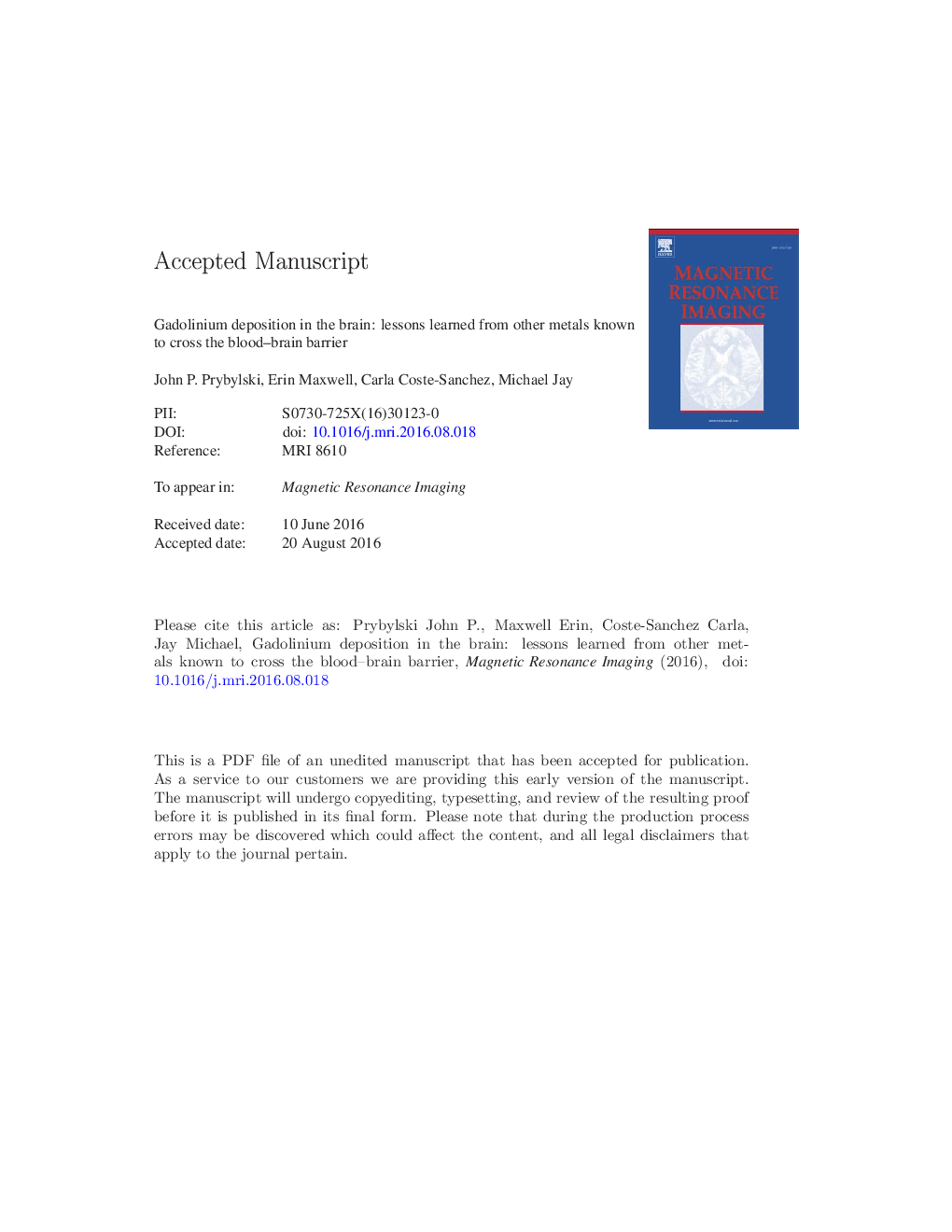| Article ID | Journal | Published Year | Pages | File Type |
|---|---|---|---|---|
| 5491618 | Magnetic Resonance Imaging | 2016 | 18 Pages |
Abstract
The recent discovery of gadolinium (Gd) deposition in the brains of patients receiving Gd-based contrast agents (GBCAs) raises several important questions including by what mechanism Gd or GBCAs pass through the blood-brain barrier. Decades of research focused on the safety and stability of GBCAs have not identified any mechanism of uptake. Here we review findings of Gd deposition from human and animal data, and how distribution mechanisms elucidated for endogenous and toxic metals may explain entrance of Gd into the central nervous system. Three general uptake mechanisms are considered along with examples of metals known to enter the central nervous system by these routes: (1) carrier-mediated, (2) transporter-mediated and (3) passive. The potential for chelation therapy to reduce deposition is also discussed. The work reported for other metals provides guidance for how the mechanism of Gd deposition in the brain can be determined which is essential information for rational prevention or treatment.
Related Topics
Physical Sciences and Engineering
Physics and Astronomy
Condensed Matter Physics
Authors
John P. Prybylski, Erin Maxwell, Carla Coste Sanchez, Michael Jay,
